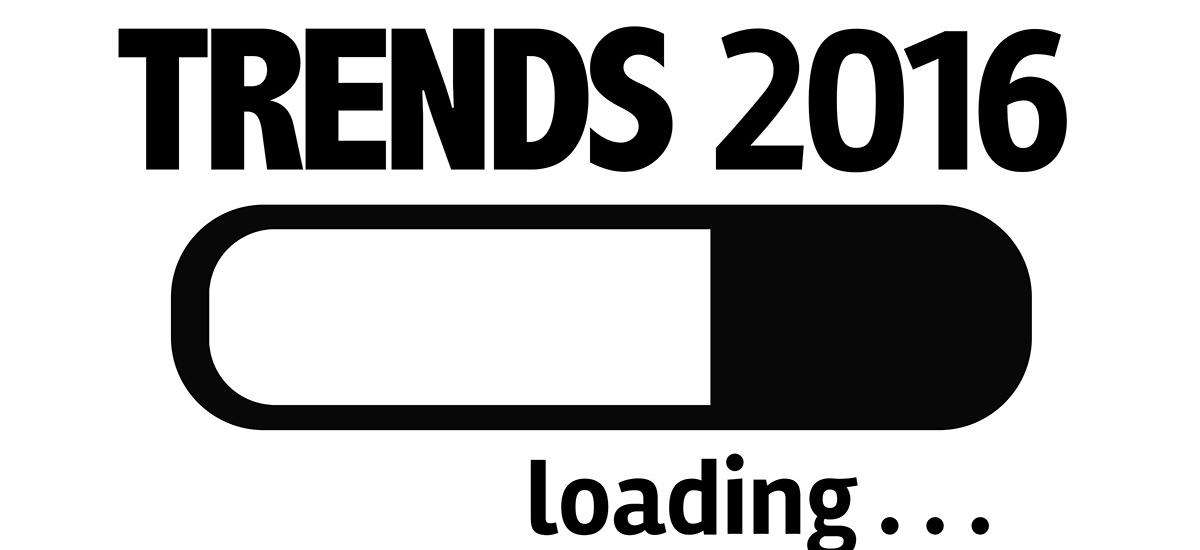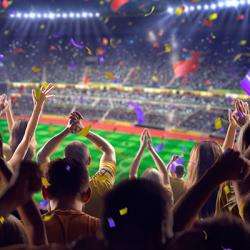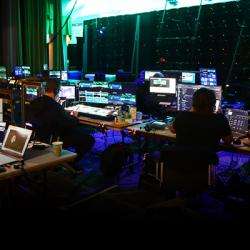Ten Techs Trending Now!

The future of event staging technology will focus on engagement, personalization, augmentation and collaboration. Attendees already crave the ability to work smarter and more productively together. Building stronger personal connections while being able to navigate through clutter and non-relevance is ever-present. The need to WOW an audience never left, but is evolving faster than many can adapt. Creative design has shifted to digital, augmented or virtual displays that lessen carbon footprint. While the need for live events will never go away, many industry innovators are focusing on new approaches to remote participation at an event. Fast-forward 1-5 years and you will have probably experienced each of these below listed Ten Techs Trending Now!
- Radio Frequency Identification (RFID): RFID uses electromagnetic or electrostatic coupling in radio frequencies to uniquely identify an object. For example, name badges at conferences could be used to generate statistics on which attendees visited which exhibit booths, who was in each meeting track - how long they attended, or when they left the room. These statistics provide event managers insight into attendees interest and engagement level. If needed, it can be used to welcome each attendee on a large display as they entered a room, also providing personalization opportunity and allowing for enhanced networking amongst the guests.
- Augmented Reality (AR): AR is a disruptive technology changing the way humans interact with the world by enhancing reality using everyday smart devices (iPhones, Androids, iPads). AR allows a user to point a smart device camera at an object and the image is overlaid with digital content (IE video, graphics, audio, text, PDF, web links, social media integration). AR is being used for real-time training and to provide the most up-to-date information, to decrease the cost and carbon footprint of messaging, for location services, to strengthen communications and brand recognition, to appeal to millennials and to provide campaign analytics and strategic intensify insight selling. AR is the new bridge between what physically exists and the limitless creativity of imagination and YOUR marketing Strategy!
- Surround Sound: Surround sound is not new technology by any means, but is less frequently incorporated into a corporate event type setting. In conjunction with an ad agency, IMS recently provided services where attendees were asked to vote on the next meeting destination, and visuals of a horserace were projection mapped around the room with surround sound following the race in real-time. Attendees felt as if the horses were racing around them.
- Interactive Display Surfaces: Displays that allow presenters and attendees to interact with content is being incorporated in both breakout rooms, networking/tech/social media lounges and general sessions by leaps and bounds. Interactive displays allow presenters to mark up a presentation with notes, zoom in and out of charts, formulas and other graphics. They allow groups to actively collaborate with one another, lessen the carbon footprint of your event and they appeal to a young, tech-driven audience more so than a cluster of flipcharts or a tripod screen.
- Self-standing, wireless, video walls: Why print banners that are static and stale? PixelFlex manufactures a self-standing, wireless video wall. There is no need to have power or cables run to it. Just select your images, videos, graphics and display your message!
- Robotics: A company called Double Robotics now offers a 2-way telecommunicating iPad on a stand with wheels. The far end attendee has the ability to control the motion of the object and the view of the camera from her remote location, see and hear what is happening on the other side. This could decrease costs for travel, F&B and lodging for greeters at events, Q&A in a Tech Lounge or Exhibit Hall… all while decreasing carbon footprint.
- 360° Video Streaming: Video streaming was an emerging technology… forever ago. However, today streaming video with a 360° view of an event allows a remote user to experience a performance or presentation in a way that many of us never have.
- Programmable LED Props or Effects: For Mega-Events, large performances or for dramatic effect companies like Glow Motion and TLC Creative are creating environments that bring people together through imagination and memorable experiences. These techs can include RF Communication, Friend Finding features, Proximity effects, strobing and fading, color matching, logo display and manipulation and some technologies can be linked with mobile apps.
- Holograms and Holographic Computing: Producing holographic scenery that can be experienced during a live event setting can be tricky to say the least… most notably ensuring that the venue is conducive. An emerging technology that could change the way consumers experience holographic “mixed-reality” is being developed in Microsoft Studios called HoloLens. Microsoft is developing the world’s first and only fully untethered, fully holographic computer. This tool can be used for gaming, entertainment, productivity, design, or entertainment.
- Boundary-less Collaboration & Presentation Tools: A new technology called FocalCast allows presenters to give presentations from any SmartDevice onto any digital display surface. The technology is not limited by what device they’re using, or the teleconference software being used. It can connect all FocalCast enabled devices for enhanced productivity, to teach, to learn and collaborate in shared workspaces. FocalCast enables live collaboration on any tablet, mobile device, PC or videoconference system with no downloads or plugins.
We hope you found these technologies interesting. Please reach out to us to let us know what you think or for assistance in implementing at your next event!
Article written by Julie Renninger, National Account Manager
Share This Article
Categories
Latest Posts

Philadelphia 2026: Is Your Venue Ready for the Spotlight?

Scalable AV Infrastructure for Life Science Enterprises

Extend Your Reach: The Power of Virtual and Hybrid Events

Why Every Detail Matters in Investor and Year-End Meetings

IMS Technology Services Welcomes John Beaulieu
Tags
Contact Us
- Headquarters: 3055 MCCANN FARM DRIVE, GARNET VALLEY, PA 19060
- Event Staging: 2000 COLUMBIA AVENUE, SUITE 300, LINWOOD, PA 19061
- Southeast Office: 404 SUNPORT LANE, SUITE 350, ORLANDO, FL 32809
- Phone: + 610-361-1870
- Contact Us
Services
Recent Posts

Philadelphia 2026: Is Your Venue Ready for the Spotlight?

